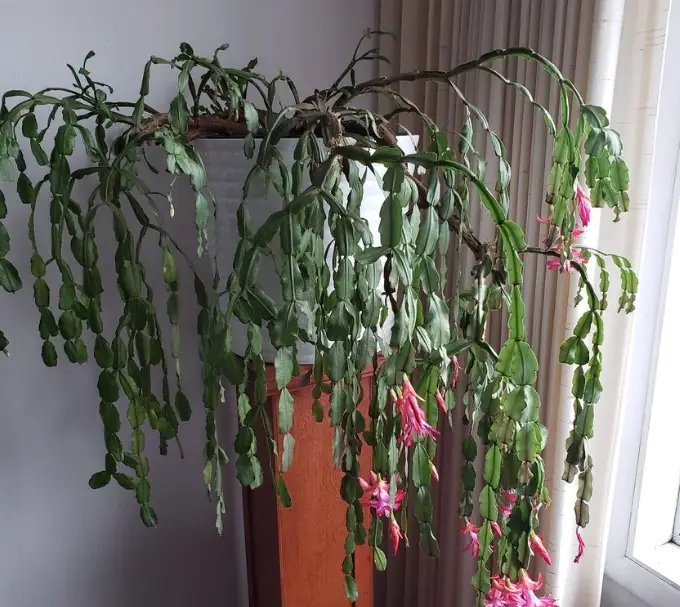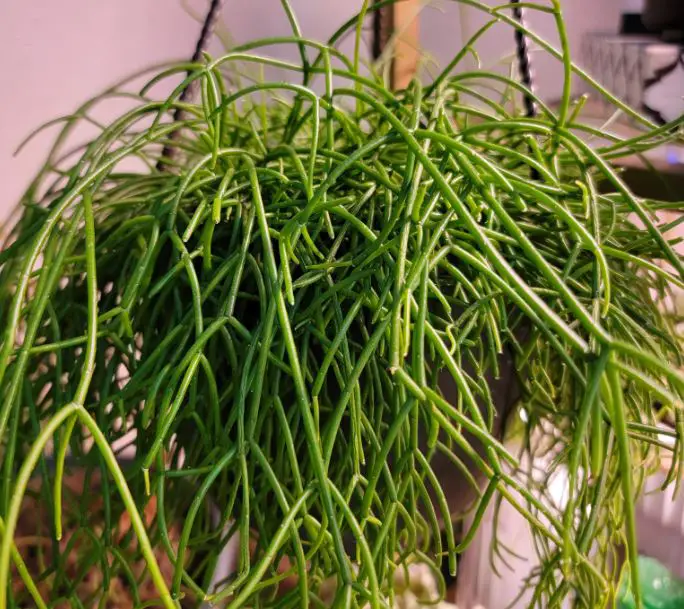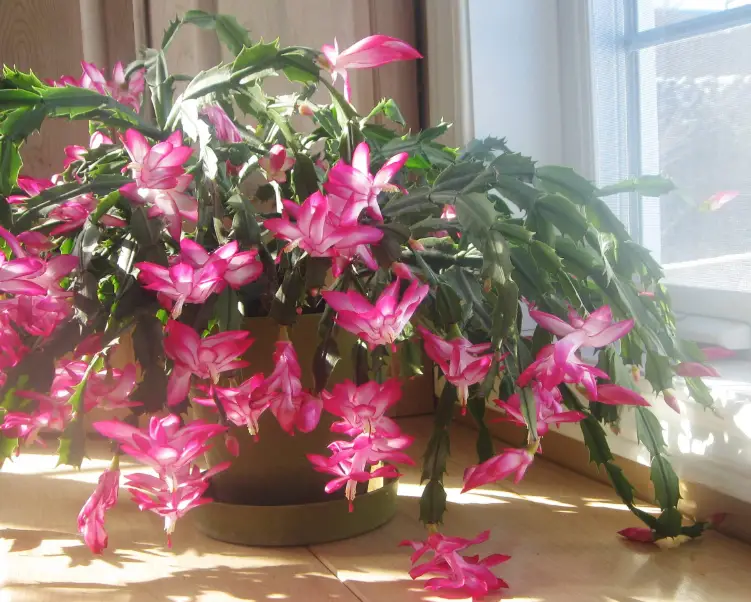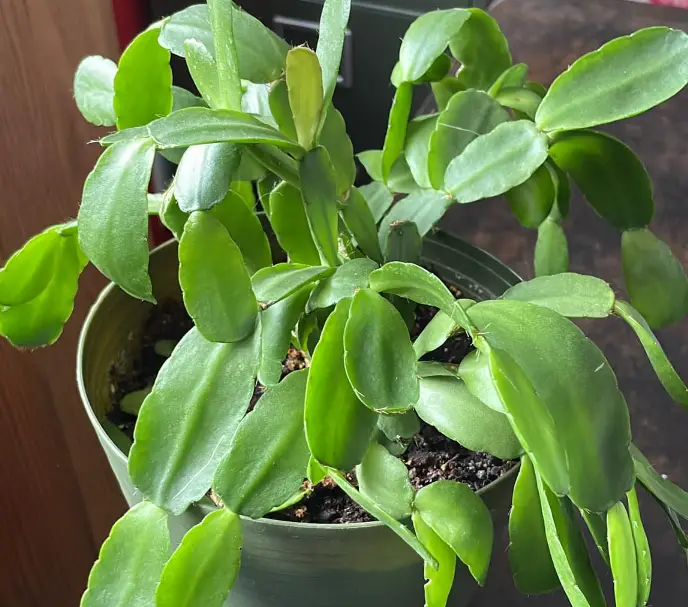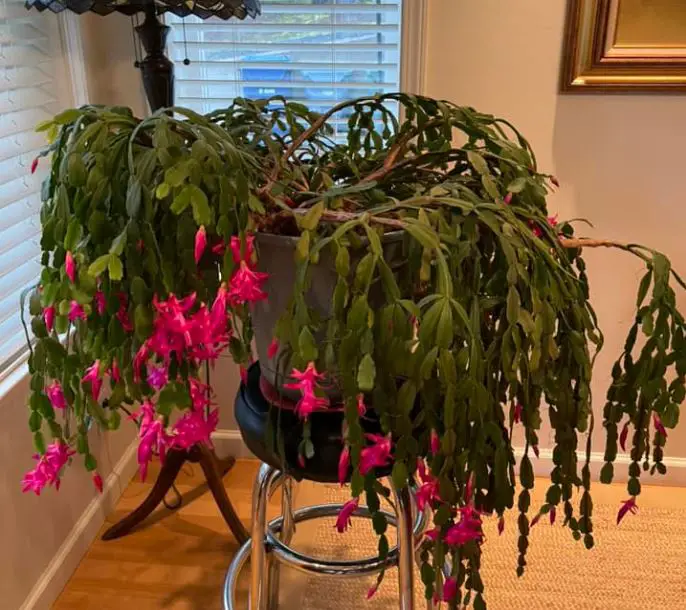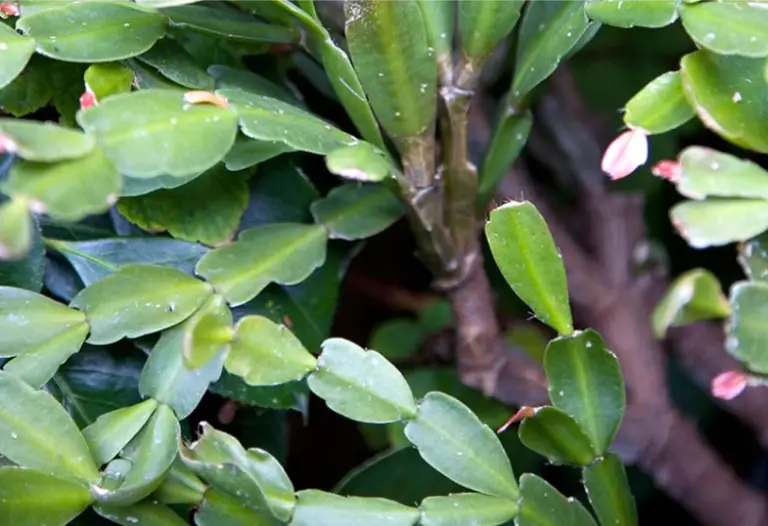Christmas Cactus Leaves Curling? What to Do Next
The Christmas cactus (Schlumbergera bridgessii), is a popular holiday plant that produces beautiful blooms during the winter. Christmas cactus leaves curling can be a cause for concern. In this guide, I’ll explain the reasons behind this problem and what you can do to save the plant.
Healthy Christmas cactus leaves are rich vibrant and deep green in color. In the right growth conditions, they remain plump and turgid, ready to support the colorful flowers. Curing leaves can be a sign of distress from improper watering, low humidity, heat, or pests and diseases.
Note: Christmas cactus leaves are actually stem segments. They are often referred to as leaves and I will also be using the same term in this guide.
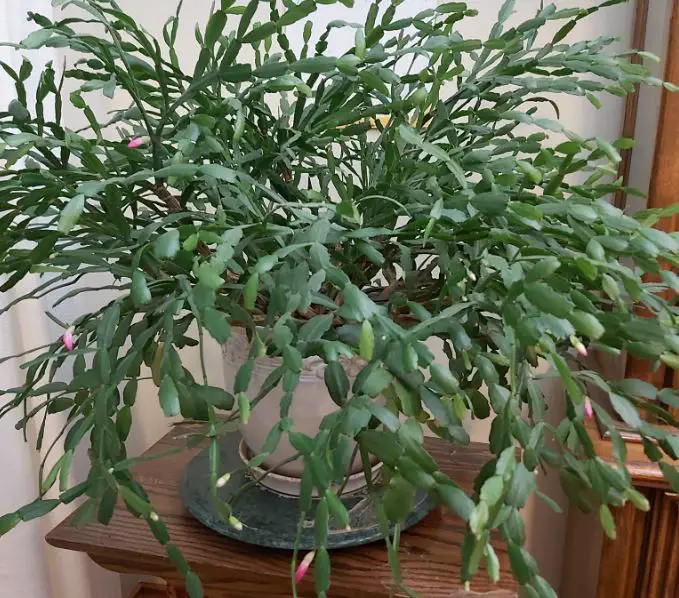
Why Do Christmas Cactus Leaves Curl
Christmas cactus is relatively easy to grow and maintain. Leaves curling is commonly a sign of distress due to improper growth conditions. They include the following:
Improper watering
Christmas cacti prefer slightly moist soil, but not soggy roots. Overwatering can deprive roots of oxygen resulting in root rot. This can cause the plant to shrivel and die. Similarly, dry soil can stress the plant, resulting in leaf curling.
So, to tell if you have overwatered or underwatered your cactus, inspect the soil moisture. Hard dry soil and bristle cactus roots tell that your plant is severely dehydrated. But if the soil is soggy and the plant’s roots are mushy, then you are dealing with overwatering.
How to fix
It is easier to save an underwatered Christmas cactus than when it’s overwatered. Root rot is a very difficult condition to treat. If you suspect root damage, the only solution is to repot the Christmas cactus in a fresh well-draining soil mix and adjust your watering.
If your Christmas cactus is underwatered, simply give it a thorough watering. Before watering again, allow the top inch of the soil to dry out. Ensure there is proper drainage and avoid letting the plant sit in standing water. Make sure the pot has drainage holes to allow excess water to escape.
Low humidity levels
The Christmas cactus prefers humid environments. In their native habitats, they enjoy the constant humidity of the rainforests. Low humidity levels, especially in heated indoor spaces during the winter months, can cause leaves to curl. This happens as the plant tries to conserve moisture.
Solution
If the air feels dry in your home, increase humidity around the plant by running a humidifier. There are also various ways to boost humidity around your houseplants without a humidifier. You can simply place a tray of water near the plant or place the pot in a pebble tray half filled with water.
Misting the plant can also help, but avoid misting directly on the flowers and buds. Make sure to also check the soil moisture. While it’s recommended to reduce watering the cactus during the winter months, avoiding it completely will cause leaves to curl and wilt.
Temperature stress
Maintaining a stable temperature is important for the health of your Christmas cactus. A daytime temperature of 70°F (21°C) and an evening temperature of 60-65°F (15-18°C) is preferred. Fluctuations in temperature can cause the leaves on your Christmas cactus to curl or wrinkle up.
What to do
Keep your Christmas cactus from any sudden temperature changes and drafts. Keep the plant away from cold windows and heaters, especially during the winter season. Just maintain a consistent room temperature and make sure the plant is receiving bright light.
Improper lighting
Exposure to direct sunlight can stress a Christmas cactus and cause its leaves to curl. This holiday cactus prefers bright, indirect light for most of the day. An east-facing window is a perfect spot for this plant. Elsewhere can be fine as long as the light is sufficient, bright, and indirect.
Insufficient sunlight is neither healthy for a Christmas cactus. It can make the plant grow tall and thin, turn pale, or stop growing. Poor lighting can also be a reason why your Christmas cactus is not blooming. Light is essential for the production of sugars that help the plant to grow and flower.
Best fix
Inspect the lighting condition of your room and relocate your Christmas cactus if it’s receiving direct sunlight. Place it in a location with bright, indirect light. A north or east-facing window is often ideal. If natural light is insufficient, consider using an artificial grow light.
Incorrect pot size or soil
Although the Christmas cactus likes to be rootbound, it might experience stress when the roots become heavily entangled. This typically stops them from taking up water and nutrients as required. As such, the leaves of Schlumbergera bridgessii will start curling or shriveling.
Additionally, using incorrect type of soil can affect the health and vigor of your plant. Christmas cactus prefers a well-draining soil preferably cactus or succulent mix. Standard potting soil can compact easily or retain excess moisture, and this can stress the plant.
What to do
If your Christmas cactus is root-bound, repot it into a slightly larger pot with well-draining soil. This will refresh the soil and provide the roots with more space. Make sure to use the ideal potting soil for Christmas cactus and a pot with drainage holes.
Pests and diseases
Common garden pests are notably one of the Christmas cactus problems. Infestations by mealybugs or fungal diseases like root rot can stress the plant. Most pests suck sap from the plants and this can make the leaves on your Christmas cactus curl.
How to treat
Regularly inspect your plant for signs of pests or diseases. Isolate plants that are infested or infected and treat them as needed. You may use neem oil or insecticidal soap to control pests or use a systemic pesticide in managing severe infestations.
Providing proper care including balanced watering, fertilizing during the growing season, and providing proper lighting should also be helpful in preventing the issues of pests and diseases. Always consult with plant specialists in areas where you can’t handle.
Final thought
Christmas cactus remains a beautiful and vibrant addition to any holiday decor. With proper watering, humidity, temperature, light, and soil conditions, this plant rewards with beautiful blooms during the winter holidays.
Leaves curling is a sign of distress from improper growth conditions. By addressing the underlying factors and providing the right care, you can revive your Christmas cactus. To maintain the vigor and health of your plant, just pay attention to its specific needs.
My name is Diane M Lewik, and I am the founder of this website. I am a degree holder in plant biology from the University of California – Berkeley. Over years, I have cultivated a vast collection of succulents and I have learned a great deal about how to grow and care for these unique plants.
